Discover 35 hidden attractions, cool sights, and unusual things to do in Cambridge (United Kingdom). Don't miss out on these must-see attractions: Fitzwilliam Museum, Parker's Piece, and King's College Chapel. Also, be sure to include The Backs in your itinerary.
Below, you can find the list of the most amazing places you should visit in Cambridge (England).
Table of Contents
Fitzwilliam Museum

Antique and modern art and artefacts. The Fitzwilliam Museum is the art and antiquities museum of the University of Cambridge. It is located on Trumpington Street opposite Fitzwilliam Street in central Cambridge. It was founded in 1816 under the will of Richard FitzWilliam, 7th Viscount FitzWilliam, and comprises one of the best collections of antiquities and modern art in western Europe. With over half a million objects and artworks in its collections, the displays in the Museum explore world history and art from antiquity to the present. The treasures of the museum include artworks by Monet, Picasso, Rubens, Vincent van Gogh, Rembrandt, Cézanne, Van Dyck, and Canaletto, as well as a winged bas-relief from Nimrud. Admission to the public is always free.
The museum is a partner in the University of Cambridge Museums consortium, one of 16 Major Partner Museum services funded by Arts Council England to lead the development of the museums sector.[1]
Address: Trumpington St, CB2 1RB Cambridge
Parker's Piece
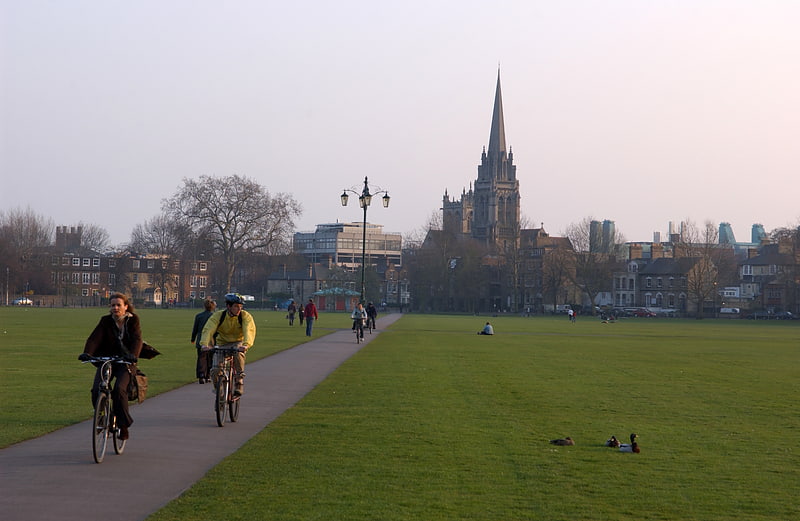
Park in Cambridge, England. Parker's Piece is a 25-acre flat and roughly square green common located near the centre of Cambridge, England, regarded by some as the birthplace of the rules of Association Football. The two main walking and cycling paths across it run diagonally, and the single lamp-post at the junction is colloquially known as Reality Checkpoint. The area is bounded by Park Terrace, Parkside, Gonville Place, and Regent Terrace. The Cambridge University Football Club Laws were first used on Parker's Piece and adopted by the Football Association in 1863. "They embrace the true principles of the game, with the greatest simplicity". 'The Cambridge Rules appear to be the most desirable for the Association to adopt'.
The grass is mown and the area is known today chiefly as a spot for picnics and games of football and cricket, and serves as the games field for nearby Parkside Community College. Fairs tend to be held on the rougher ground of Midsummer Common.
In 1838, a feast for 15,000 guests was held on Parker's Piece to celebrate the coronation of Queen Victoria.[2]
Address: Gonville Place, CB1 1LY Cambridge
King's College Chapel

Chapel in Cambridge, England. King's College Chapel is the chapel of King's College in the University of Cambridge. It is considered one of the finest examples of late Perpendicular Gothic English architecture and features the world's largest fan vault. The Chapel was built in phases by a succession of kings of England from 1446 to 1515, a period which spanned the Wars of the Roses and three subsequent decades. The Chapel's large stained glass windows were completed by 1531, and its early Renaissance rood screen was erected in 1532–36. The Chapel is an active house of worship, and home of the King's College Choir. It is a landmark and a commonly used symbol of the city of Cambridge.[3]
Address: King's Parade, CB2 1ST Cambridge
The Backs
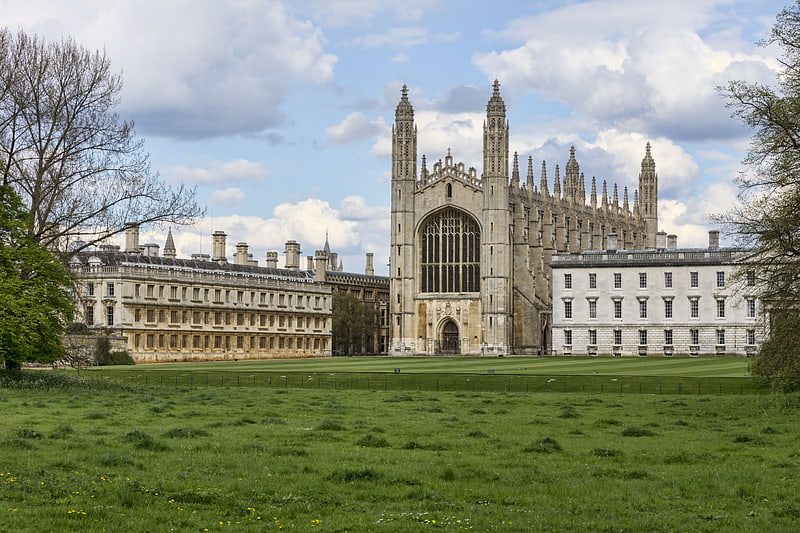
Park in Cambridge, England. The Backs is a picturesque area to the east of Queen's Road in the city of Cambridge, England, where several colleges of the University of Cambridge back on to the River Cam, their grounds covering both banks of the river.
National Trust chairman Simon Jenkins has rated the view of The Backs and King's College as one of the top ten in England.[4]
Address: Queens' Road, CB3 9AH Cambridge
Church of St Mary the Great

Anglican church in Cambridge, England. St Mary the Great is a Church of England parish and university church at the north end of King's Parade in central Cambridge, England. It is known locally as Great St Mary's or simply GSM to distinguish it from "Little St Mary's". It is one of the Greater Churches. It is designated by Historic England as a Grade I listed building.
In addition to being a parish church in the Diocese of Ely, it is the university church for the University of Cambridge. As such it has a minor role in the university's legislation: for example, university officers must live within 20 miles of Great St Mary's and undergraduates within three. The church also hosts the "University Sermons" and houses the University Organ and the University Clock. The latter chimes the "Cambridge Quarters" which were later used by the clock tower of the Houses of Parliament ("Big Ben").[5]
Address: Senate House Hill, CB2 3PQ Cambridge
Cambridge University Botanic Garden
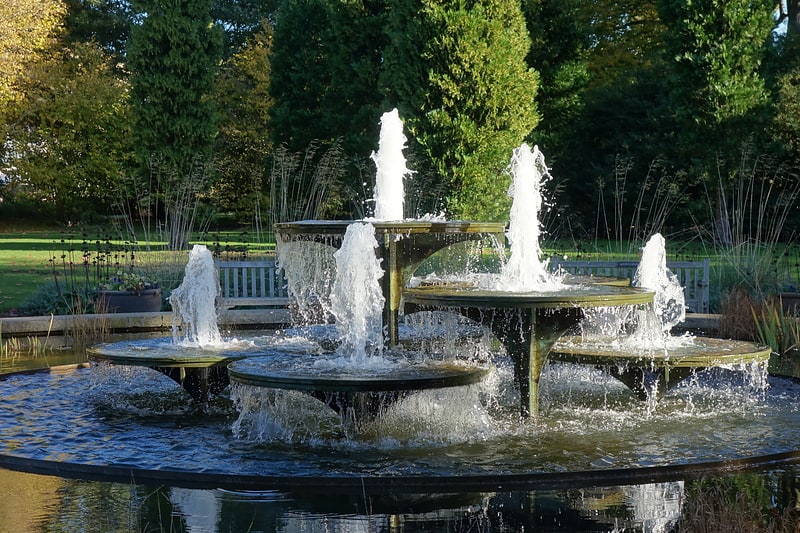
Large heritage garden with glasshouses. The Cambridge University Botanic Garden is a botanical garden located in Cambridge, England, associated with the university Department of Plant Sciences. It lies between Trumpington Road to the west, Bateman Street to the north and Hills Road to the east.
The garden covers an area of 16 hectares (40 acres). The site is almost entirely on level ground and in addition to its scientific value, the garden is highly rated by gardening enthusiasts. It holds a plant collection of over 8,000 plant species from all over the world to facilitate teaching and research. The garden was created for the University of Cambridge in 1831 by Professor John Stevens Henslow (Charles Darwin's mentor) and was opened to the public in 1846.
The highest temperature recorded in the UK, 38.7 °C (101.7 °F), was recorded on 25 July 2019 at the garden.[6]
Address: 1 Brookside, CB2 1JE Cambridge
Cambridge American Cemetery and Memorial
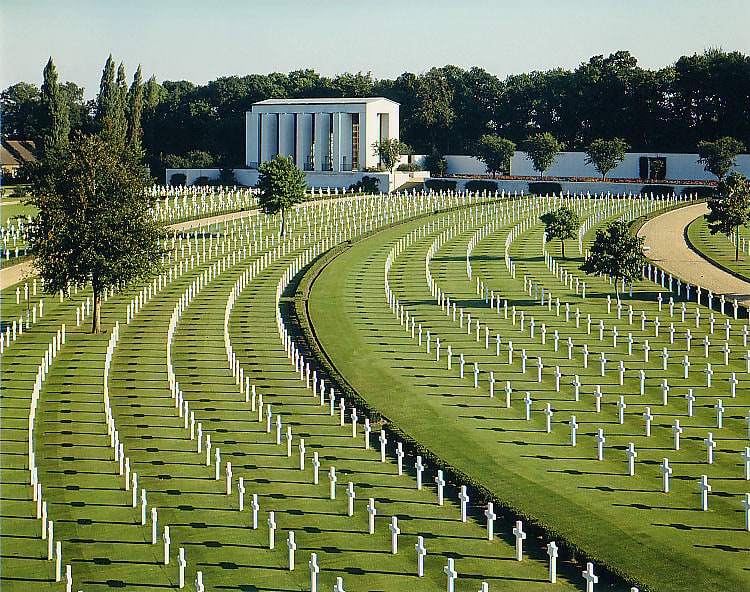
Military cemetery in England. Cambridge American Cemetery and Memorial is a World War II American military war grave cemetery, located between the villages of Coton and Madingley, 7 km north-west of Cambridge, England. The cemetery, dedicated in 1956, contains 3,811 American war dead and covers 30.5 acres. Cambridge American Cemetery is one of 26 overseas military cemeteries administered by the American Battle Monuments Commission.
The memorial is listed Grade II* on the National Heritage List for England.[7]
Address: Madingley Rd, CB23 7PH Coton
Corpus Clock
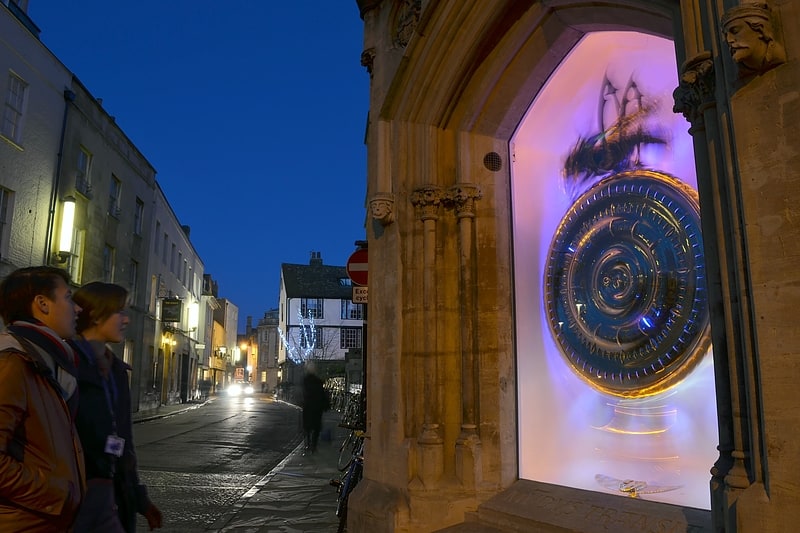
Handless timepiece with a unique design. The Corpus Clock, also known as the Grasshopper clock, is a large sculptural clock at street level on the outside of the Taylor Library at Corpus Christi College, Cambridge University, in the United Kingdom, at the junction of Bene't Street and Trumpington Street, looking out over King's Parade. It was conceived and funded by John C. Taylor, an old member of the college.
It was officially unveiled to the public on 19 September 2008 by Cambridge physicist Stephen Hawking. The clock was named one of Time's Best Inventions of 2008.[8]
Address: Corpus Christi College, Taylor Library, Cambridge
Wimpole Estate
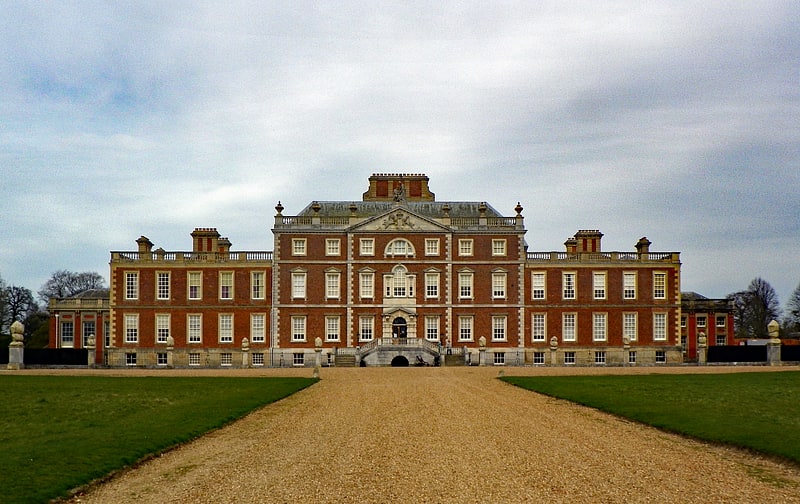
Tourist attraction in England. Wimpole Estate is a large estate containing Wimpole Hall, a country house located within the Parish of Wimpole, Cambridgeshire, England, about 8+1⁄2 miles southwest of Cambridge. The house, begun in 1640, and its 3,000 acres of parkland and farmland are owned by the National Trust. The estate is regularly open to the public and received over 335,000 visitors in 2019. Wimpole is the largest house in Cambridgeshire.[9]
Market Hill
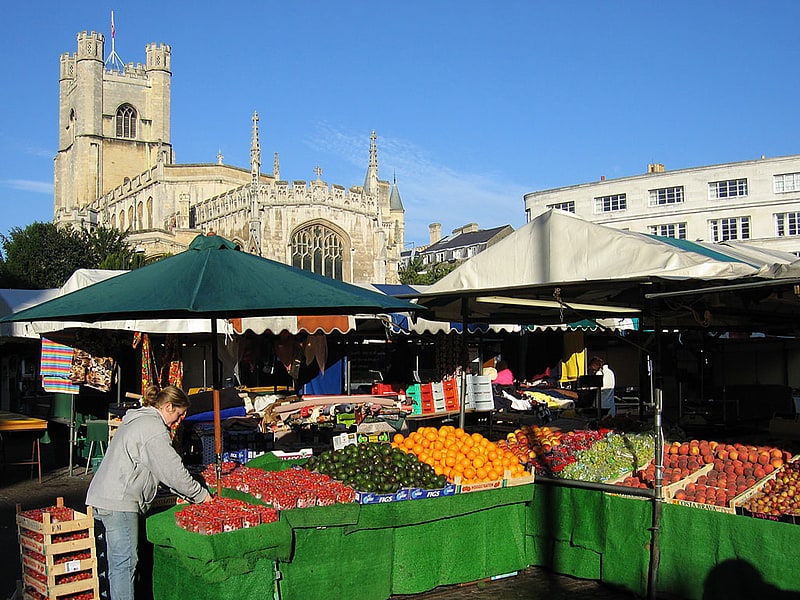
Market Hill is the location of the marketplace in central Cambridge, England. Operating as a marketplace since Saxon times, a daily outdoor market with stalls continues to run there.[10]
Address: Market Street, CB2 3QJ Cambridge
Primavera
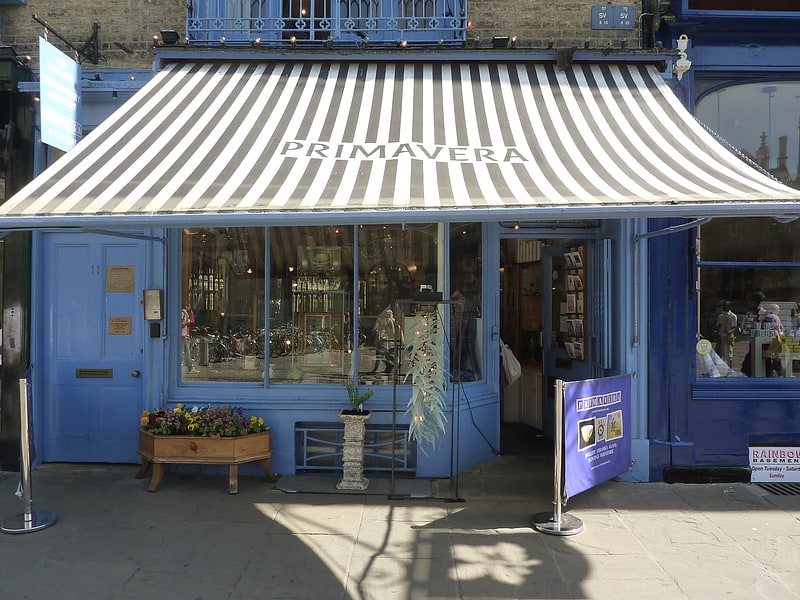
Art gallery in Cambridge, England. Primavera is a fine arts and crafts gallery at 10 King's Parade in Cambridge, England. Henry Rothschild founded Primavera in 1945 in Sloane Street, London, in order to promote and retail contemporary British art and craft. The Cambridge branch of Primavera was founded in 1959, when Rothschild took over a shop formerly run by the Cambridge Society of Designer-Craftsmen on King's Parade.[11]
Address: 10 Kings Parade, CB2 1SJ Cambridge
Clare College Bridge

Cambridge. Clare College Bridge is the ninth bridge overall and the fifth River Cam bridge on its middle stream in Cambridge. The bridge now connects the Old Court of Clare College to Memorial Court, which was dedicated in 1926. It is a Grade I listed building.
It is the oldest still-functioning bridge in Cambridge, built in 1639-40 by Thomas Grumbold (d.1659). It is one of two bridges left standing by the Parliamentarian forces in the English Civil War (the other being the Great Bridge) when Cromwell used stone from other bridges to refortify Cambridge Castle. It was restored in 1969.
It is a three-span bridge in Early Renaissance style, built of Ketton stone ashlar. The balustrade has carved relief panels on the pedestals and is surmounted by ball finials. One of the fourteen stone balls has a missing section. Many different tales are told to explain the missing section of the globe second from the left on the south side of the bridge. The story most commonly cited by members of college is that the builder of the bridge was not paid the full amount for his work and so removed the segment to balance the shortfall in payment. A more likely explanation is that a wedge of stone cemented into the ball became loose and fell out.[12]
Little St Mary's
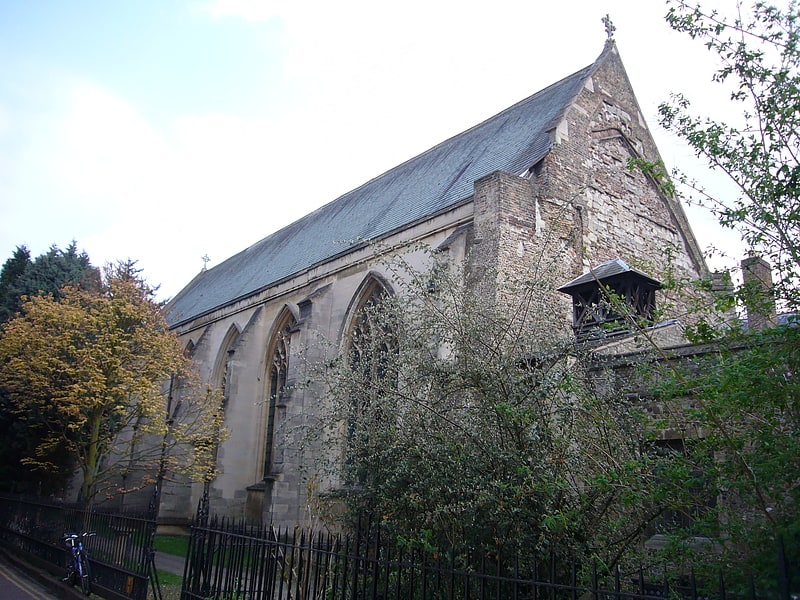
Place of worship in Cambridge, England. Little St Mary's or St Mary the Less is a Church of England parish church in Cambridge, England, on Trumpington Street between Pembroke College's Mill Lane Project development site and Peterhouse. The church Is in the Diocese of Ely and follows the 'Anglo-Catholic' or 'high-church' tradition of the Church of England. In addition to its main Sunday Mass, the church has a strong tradition of daily morning and evening prayer, regular weekday Communion and the keeping of church festivals. The church has a particular ministry helping men and women to explore possible vocations to the priesthood. Little St Mary's has active overseas mission links, provides support to local mental health projects, and participates in Hope Cambridge's Churches Homeless Project. At present, the vicar is The Rev. Dr Robert Mackley.[13]
Address: Little St. Marys Church Trumpington Street, CB2 1QG Cambridge
Garret Hostel Bridge
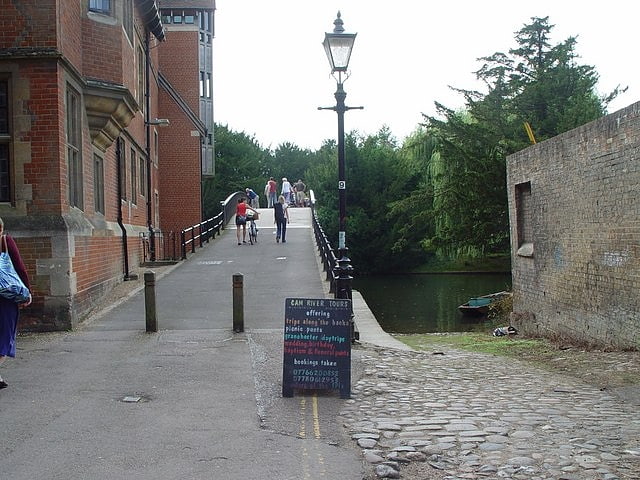
Arch bridge in Cambridge, England. Garret Hostel Bridge is a foot and cycle bridge over the River Cam in Cambridge, England. It is the tenth bridge overall and the sixth bridge on the river's middle stream in Cambridge. The first bridge there was constructed in 1455 and its name was derived from the nearby Garret Hostel. The current bridge was designed by Timothy Guy Morgan around 1960, when an undergraduate at the School of Architecture. Garret Hostel Bridge is one of three public bridges that link the city centre to The Backs, the other two being Silver Street Bridge and Magdalene Bridge.[14]
Museum of Archaeology and Anthropology
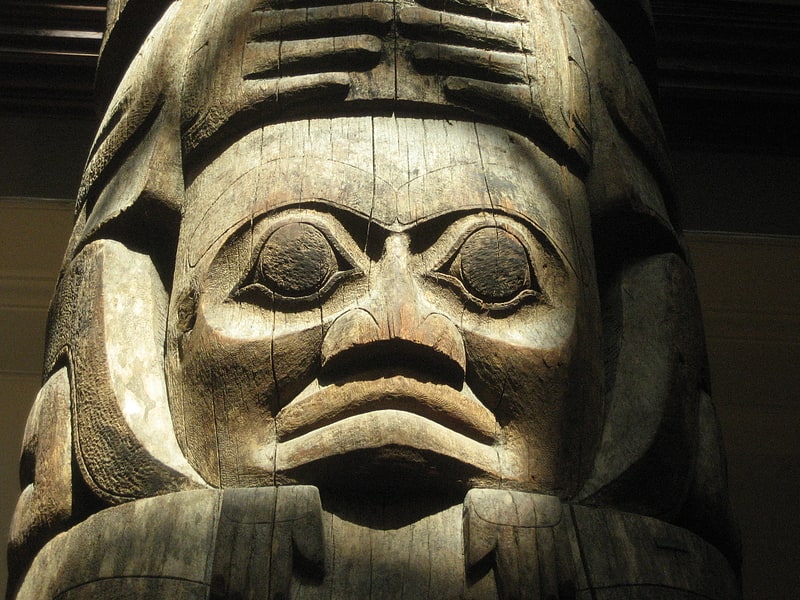
The Museum of Archaeology and Anthropology, also known as MAA, at the University of Cambridge houses the University's collections of local antiquities, together with archaeological and ethnographic artefacts from around the world. The museum is located on the University's Downing Site, on the corner of Downing Street and Tennis Court Road. In 2013 it reopened following a major refurbishment of the exhibition galleries, with a new public entrance directly on to Downing Street.
The museum is part of the University of Cambridge Museums consortium.[15]
Address: Downing St, CB2 3DY Cambridge
Bridge of Sighs
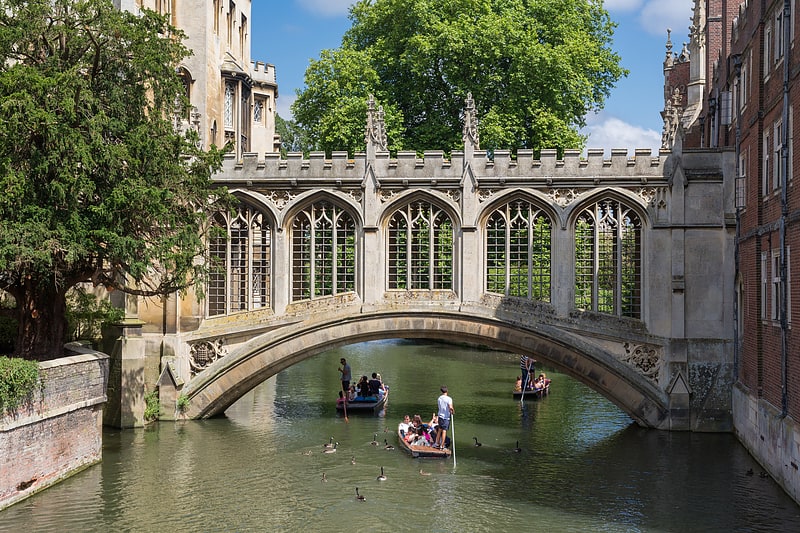
Covered arch bridge dating to 1831. The Bridge of Sighs in Cambridge, England is a covered bridge at St John's College, Cambridge University. It was built in 1831 and crosses the River Cam between the college's Third Court and New Court. The architect was Henry Hutchinson. It is named after the Bridge of Sighs in Venice, although they have little architecturally in common beyond the fact that they are both covered. The bridge, a Grade I listed building, is one of Cambridge's main tourist attractions and Queen Victoria is said to have loved it more than any other spot in the city.[16]
Address: St John's College, CB2 Cambridge
The Polar Museum

Museum in Cambridge, England. The Scott Polar Research Institute is a centre for research into the polar regions and glaciology worldwide. It is a sub-department of the Department of Geography in the University of Cambridge, located on Lensfield Road in the south of Cambridge.
SPRI was founded by Frank Debenham in 1920 as the national memorial to Captain Robert Falcon Scott and his companions, who died on their return journey from the South Pole in 1912. It investigates issues relevant to the Arctic and Antarctic in the environmental sciences, social sciences and humanities. The Institute is home the Polar Museum and has some 60 personnel, consisting of academic, library and support staff plus postgraduate students, associates and fellows attached to research programmes. The Institute also hosts the Scientific Committee on Antarctic Research.[17]
Address: Lensfield Rd, CB2 1ER Cambridge
Our Lady and the English Martyrs Church
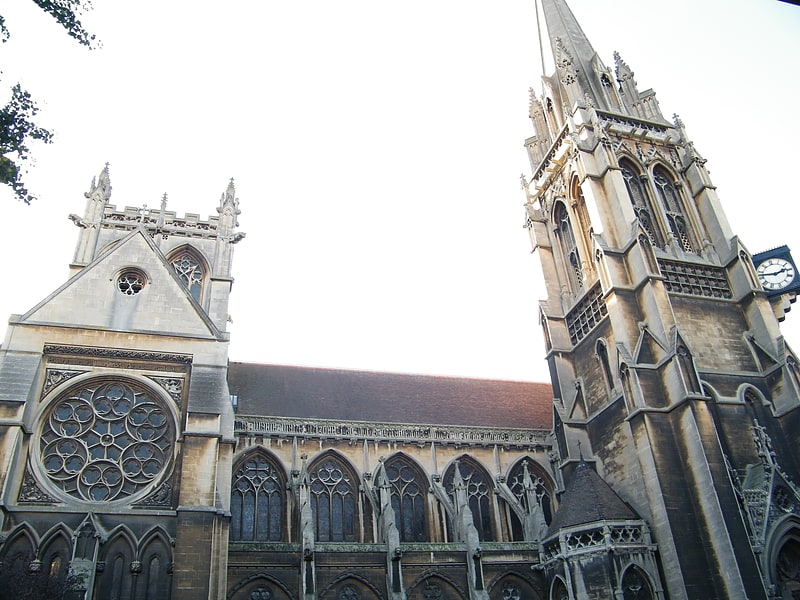
Catholic church in Cambridge, England. The Church of Our Lady of the Assumption and the English Martyrs, also known as the Church of Our Lady and the English Martyrs, is an English Roman Catholic parish church located at the junction of Hills Road and Lensfield Road in southeast Cambridge. It is a large Gothic Revival church built between 1885 and 1890.[18]
Address: Hills Rd, CB2 1JR Cambridge
Holy Sepulchre
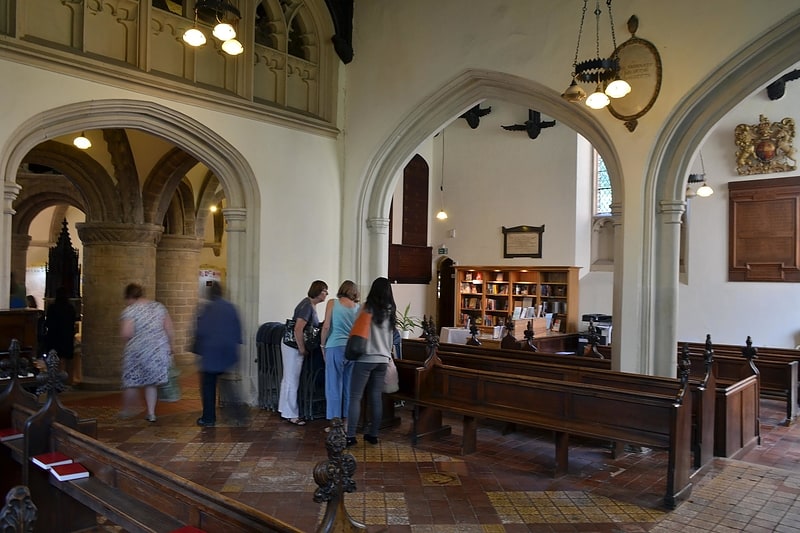
Anglican church in Cambridge, England. The Church of the Holy Sepulchre, generally known as The Round Church, is an Anglican church in the city of Cambridge, England. It is located on the corner of Round Church Street and Bridge Street. Since 1950 the church has been designated a Grade I listed building, and is currently managed by Christian Heritage. It is one of the four medieval round churches still in use in England.[19]
Address: Bridge St, CB2 1UB Cambridge
Whipple Museum of the History of Science
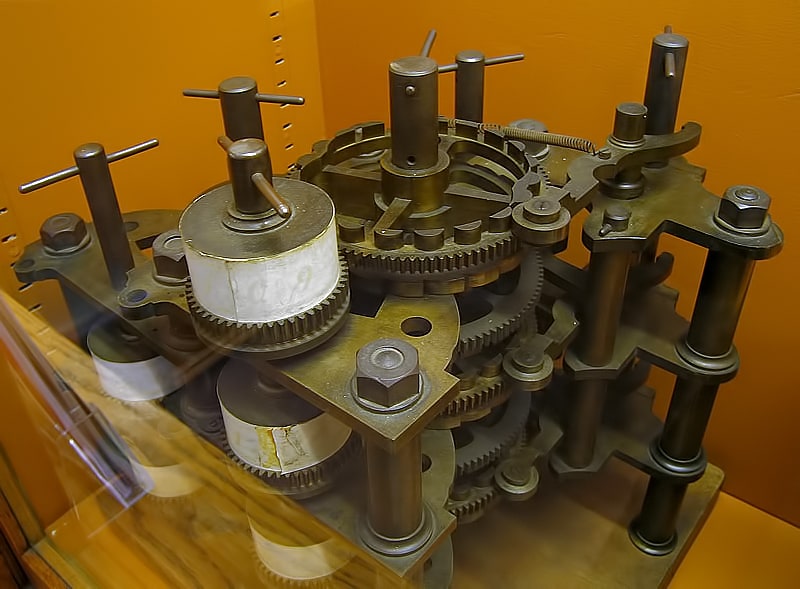
Museum in Cambridge, England. The Whipple Museum of the History of Science is a Museum attached to the University of Cambridge, United Kingdom, which houses an extensive collection of scientific instruments, apparatus, models, pictures, prints, photographs, books and other material related to the history of science. It is located in the former Perse School on Free School Lane, and was founded in 1944, when Robert Whipple presented his collection of scientific instruments to the University of Cambridge. The Museum's collection is 'designated' by the Museums, Libraries and Archives Council as being of "national and international importance".
The Museum is one of eight museums in the University of Cambridge Museums consortium.[20]
Address: Free School Lane, CB2 3RH Cambridge
Cambridge Castle
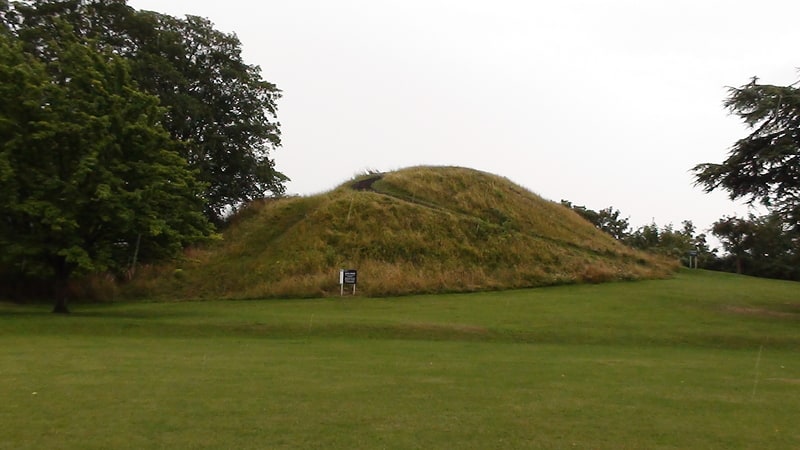
Cambridge Castle, locally also known as Castle Mound, is located in Cambridge, Cambridgeshire, England. Originally built after the Norman conquest to control the strategically important route to the north of England, it played a role in the conflicts of the Anarchy, the First and Second Barons' Wars. Hugely expanded by Edward I, the castle then fell rapidly into disuse in the late medieval era, its stonework recycled for building purposes in the surrounding colleges. Cambridge Castle was refortified during the English Civil War but once again fell into disuse, used primarily as the county gaol. The castle gaol was finally demolished in 1842, with a new prison built in the castle bailey. This prison was demolished in 1932, replaced with the modern Shire Hall, and only the castle motte and limited earthworks still stand. The site is open to the public daily and offers views over the historic buildings of the city.[21]
Address: 22 Castle Street, Cambridge
Mathematical Bridge
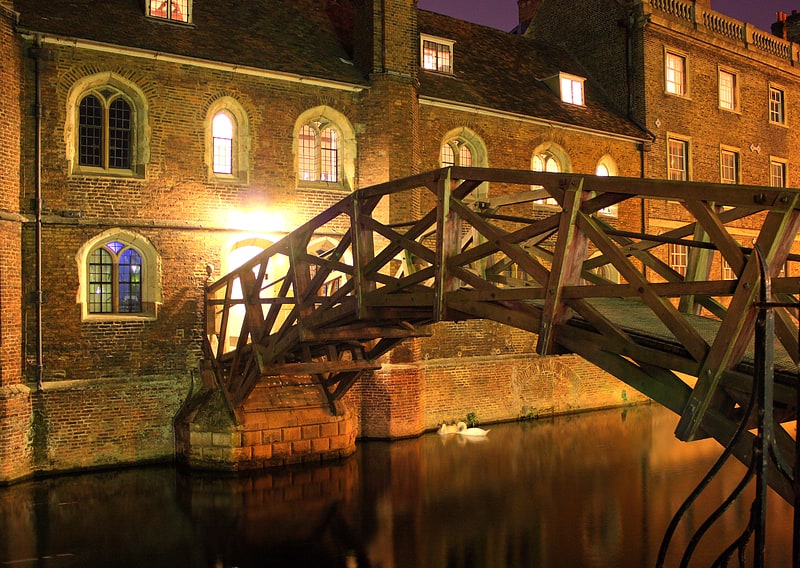
Wooden footbridge with a unique design. The Mathematical Bridge is the popular name of a wooden footbridge in the southwest of central Cambridge, United Kingdom. It bridges the River Cam about one hundred feet northwest of Silver Street Bridge and connects two parts of Queens' College. Its official name is simply the Wooden Bridge or Queens' Bridge. It is a Grade II listed building.
The bridge was designed by William Etheridge, and built by James Essex in 1749. It has been rebuilt on two occasions, in 1866 and in 1905, but has kept the same overall design. Although it appears to be an arch, it is composed entirely of straight timbers built to an unusually sophisticated engineering design, hence the name.
A replica of the bridge was built in 1923 near the Iffley Lock in Oxford.
The original "mathematical bridge" was another bridge of the same design, also commissioned by James Essex, crossing the Cam between Trinity and Trinity Hall colleges, where Garret Hostel Bridge now stands.[22]
Cambridge Central Mosque
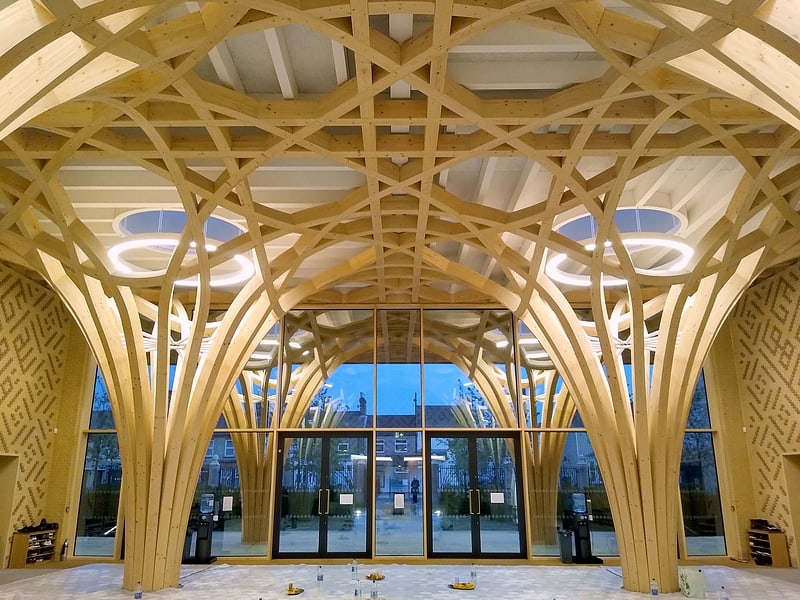
Mosque in Cambridge, England. The Cambridge Central Mosque is Europe's first eco-friendly mosque and the first purpose-built mosque within the city of Cambridge, England. Its mandate is to meet the needs of the Muslim community in the UK and beyond by facilitating good practice in faith, community development, social cohesion & interfaith dialogue. The Cambridge Central Mosque was opened to the public on 24 April 2019.[23]
Address: Mill Road, Cambridge
Downing Place United Reformed Church
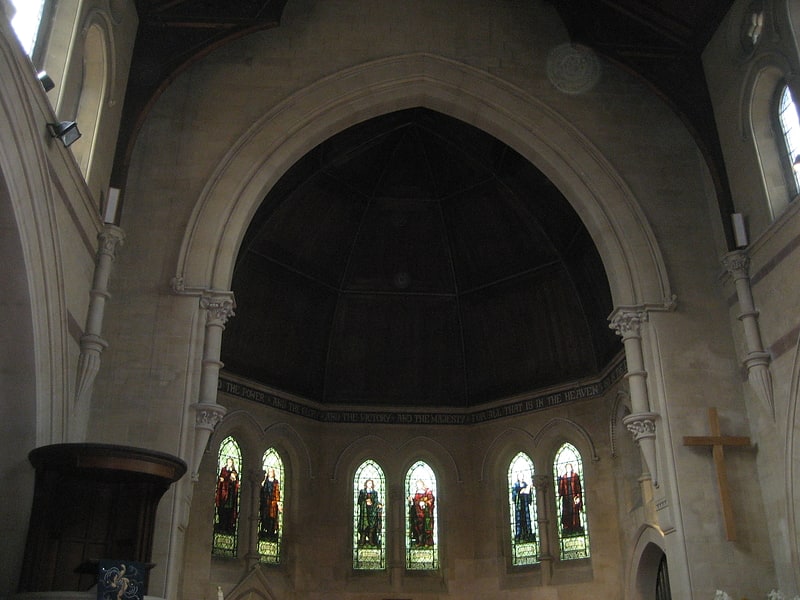
United methodist church in Cambridge, England. Downing Place United Reformed Church, Cambridge is a church in Cambridge, United Kingdom, that is part of the United Reformed Church. It was formed in 2018 in a merger between St Columba's Church, Cambridge, and Emmanuel Church, Cambridge. The church occupies the former St Columba's building in Downing Place, which is close to a site occupied by Emmanuel's congregation before 1874.
In the recent past prior to the merger of the two congregations, activities have included regular Sunday worship, a programme of music concerts, hosting an NHS group therapy centre and hosting a night-time drop-in centre hosted by Cambridge Street Pastors. The refurbishment has been designed to facilitate similar activities.[24]
Address: Trumpington St, CB2 1RR Cambridge
St Botolph's Church
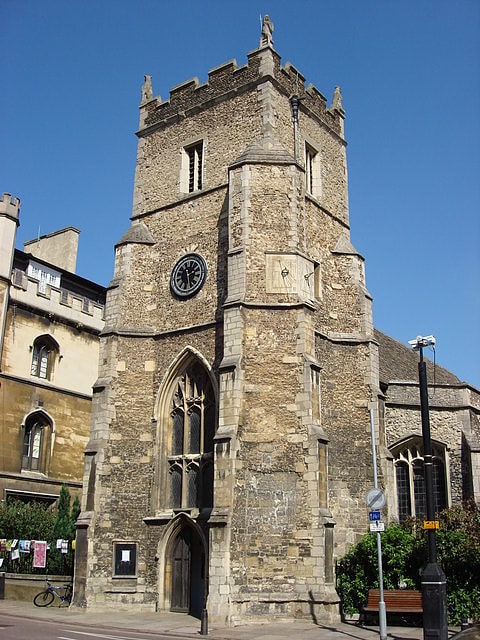
Anglican church in Cambridge, England. St Botolph's Church, Cambridge is a Church of England parish church in the city of Cambridge, England. The church is a Grade I listed building.[25]
Address: Trumpington St, CB2 1QA Cambridge
Sedgwick Museum of Earth Sciences
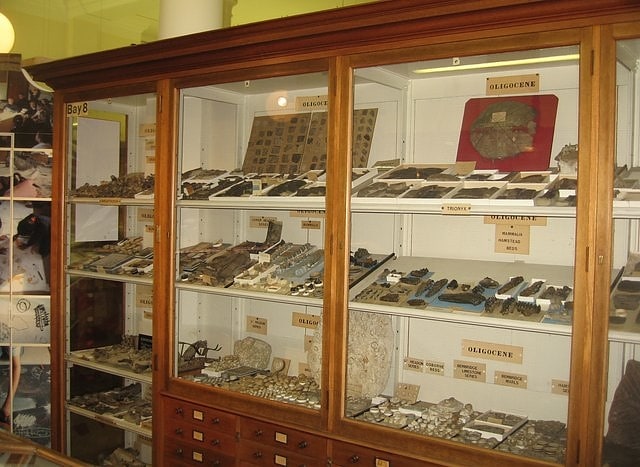
Museum in Cambridge, England. The Sedgwick Museum of Earth Sciences, is the geology museum of the University of Cambridge. It is part of the Department of Earth Sciences and is located on the University's Downing Site in Downing Street, central Cambridge, England. The Sedgwick Museum is the oldest of the eight museums which make up the University of Cambridge Museums consortium.[26]
Address: University of Cambridge, CB2 3EQ Cambridge
Christ's Pieces
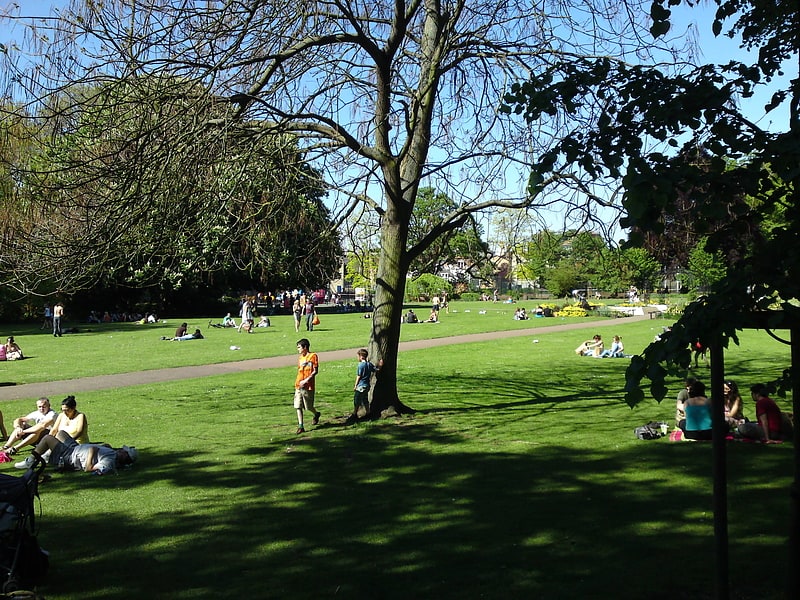
Park in Cambridge, England. Christ's Pieces or Christ's Piece is a Victorian park in the east of central Cambridge, Cambridgeshire, England, with flower beds, ornamental trees and a memorial garden to Diana, Princess of Wales. The area acts as an important publicly accessible open grassed area for the city centre. It is east of Christ's College and to the north of Emmanuel College. To the north is King Street, to the east is Emmanuel Road, to the south is Drummer Street, and to the west is Milton's Walk.
The park is used by pedestrians walking between the centre of the city and the Grafton Centre (a shopping centre). In good weather, it is often used as a place for lunch outside as well. There are tennis courts at the northwest corner of Christ's Pieces and a bowling green in the southeast corner. The main central Cambridge bus station is north off Drummer Street on the southern edge of Christ's Pieces near the southwest corner.
There is a Christ's Pieces Residents Association (CPRA) for local residents and others interested in maintaining the character of the surrounding area.[27]
Address: Emmanuel Rd., CB1 Cambridge
All Saints' Church
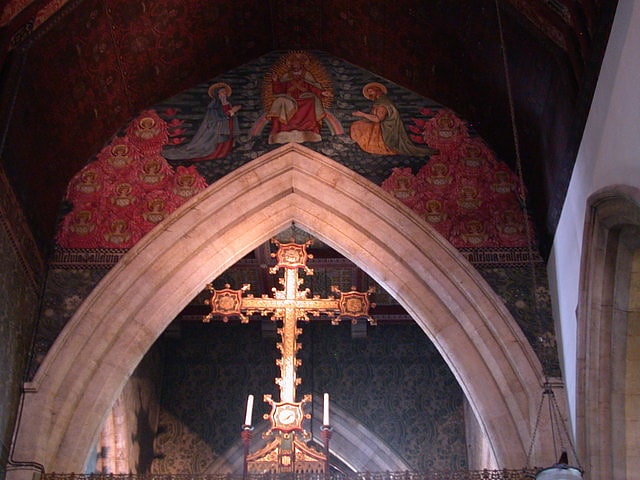
Building in Cambridge, England. All Saints' is a church on Jesus Lane in central Cambridge, England, which was built by the architect George Frederick Bodley. The church was constructed in stages between 1863 and 1870 and is a notable example of English Gothic Revival style. It was designated Grade I listed building status in 1950. It was vested in the Churches Conservation Trust in 1981. Opening times vary and visitors should contact the Churches Conservation Trust to confirm current arrangements.[28]
Address: 46 Jesus Ln, CB5 8BW Cambridge
Reality Checkpoint
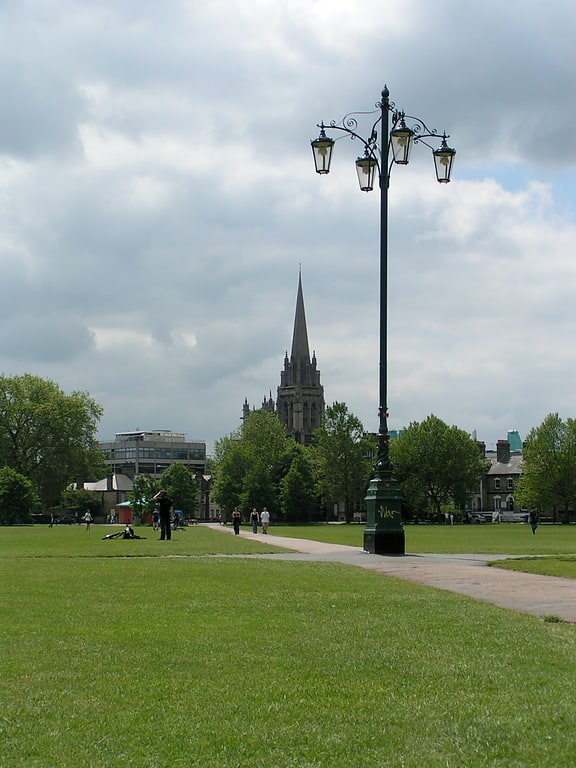
Landmark in Cambridge, England. Reality Checkpoint is a large cast-iron lamppost in the middle of Parker's Piece, Cambridge, England, at the intersection of the park's diagonal paths.[29]
Cambridge Corn Exchange

Live music venue in Cambridge, England. Cambridge Corn Exchange is a concert venue located in Cambridge, England with a capacity up to 1,681 people.[30]
Address: Wheeler St, CB2 3QE Cambridge
School of Pythagoras

Historical place in Cambridge, England. The School of Pythagoras is the oldest building in St John's College, Cambridge, and the oldest secular building in Cambridge, England. It is a Grade 1 listed building.
The School of Pythagoras was originally built around 1200, before even the University of Cambridge existed. It also predates St John's College, which was founded in 1511. It was initially a private house, but over the centuries it has had many uses. For a period it was a ruin. The reason for the name is unclear.
In the 16th century, a small manor house was added to its west side. This is known as Merton Hall. It is now used for graduate student accommodation. From 1266 until 1959 the School of Pythagoras and later Merton Hall were owned by Merton College, Oxford.
The School of Pythagoras is now used as the College Archive Centre. To the north is Northampton Street.[31]
Ascension Parish Burial Ground
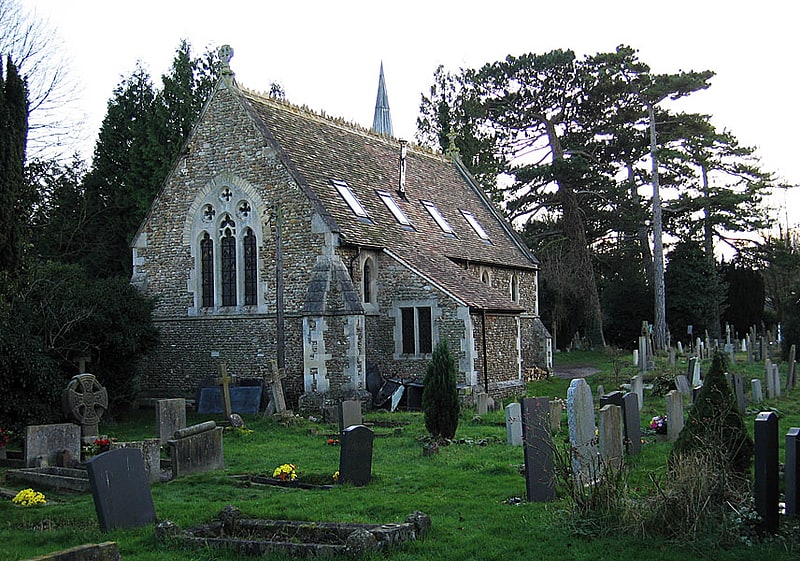
Burial ground. The Ascension Parish Burial Ground, formerly known as the burial ground for the parish of St Giles and St Peter's, is a cemetery off Huntingdon Road in Cambridge, England. Many notable University of Cambridge academics are buried there, including three Nobel Prize winners.
Although a Church of England site, the cemetery includes the graves of many non-conformists, reflecting the demographics of the parish in the 19th and 20th centuries, which covered much of West Cambridge.
It was established in 1857 while the city of Cambridge was undergoing rapid expansion, although the first burial was not until 1869. It covers one and a half acres and contains 1,500 graves with 2,500 burials. Originally surrounded by open fields, it is now bounded by trees and the gardens of detached houses, and is a designated city wildlife site.
In 2020 it was formally closed to new burials by an Order in Council, and responsibility for its upkeep was transferred to Cambridge City Council.
The former chapel of rest is now used as the workshop of letter-carver Eric Marland.[32]
Address: All Souls Lane, CB3 0EA Cambridge
Castle Street Methodist Church
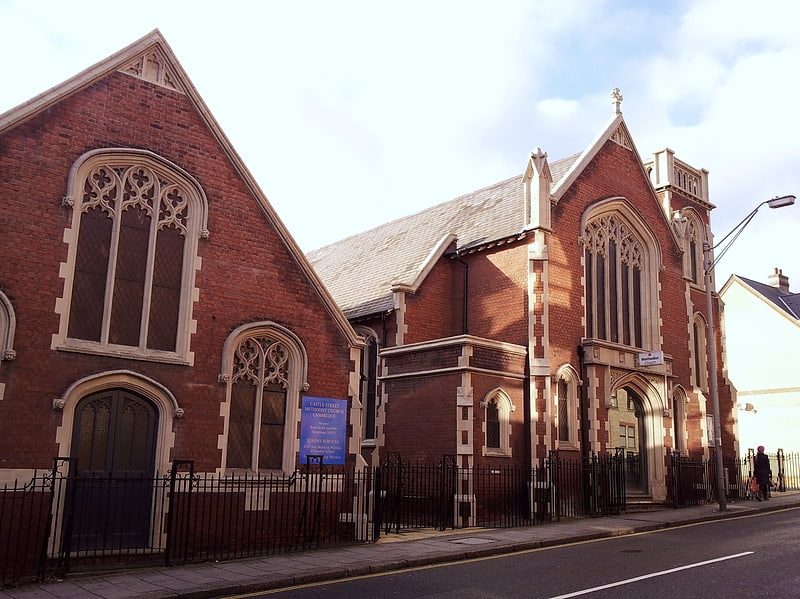
Church in Cambridge, England. Castle Street Methodist Church is a Methodist church located on Castle Street, Cambridge, England.
Castle Street is one of thirteen churches in the Cambridge Methodist Circuit.
It is a working church with a morning service each Sunday, and an evening service on all but the third Sunday in the month. There are 63 members and the minister is The Revd Alison Walker.[33]
Address: Castle Street, Cambridge
Jesus Lock
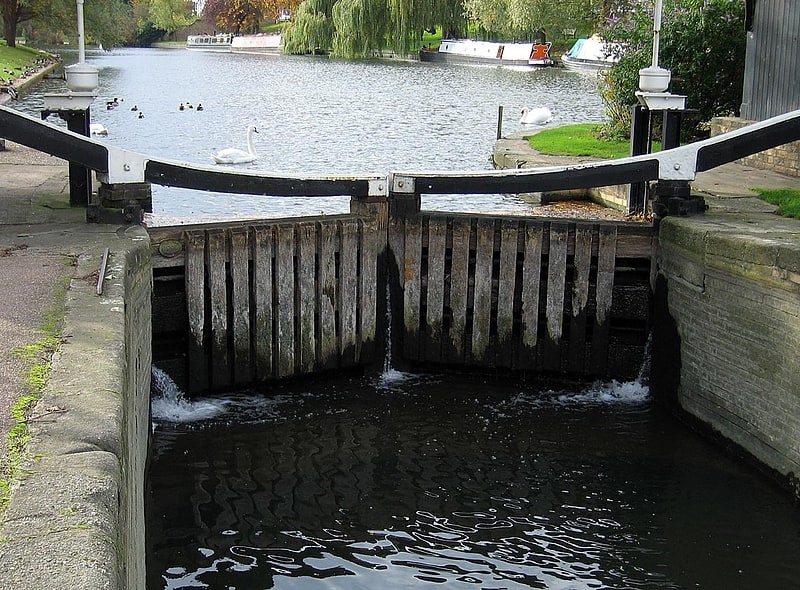
Jesus Lock is a lock on the River Cam in the north of central Cambridge, England. This is Lock No. 1 on the navigable portion of the River Cam. It was built in 1836 and is the only lock in the city. Jesus Green Lock Cottage, the former lock-keeper's cottage, is by the lock on Jesus Green. It is owned by the Conservators of the River Cam and is rented out to students.
The lock is located north of Jesus Green, which itself is north of Jesus College, hence the name. To the north of Jesus Lock is Chesterton Road (the A1303). To the east (downstream) is Victoria Avenue Bridge on Victoria Avenue and beyond that Midsummer Common, common land still used for grazing. Close by just downstream is Jesus Green Swimming Pool, a very long outdoor lido.
The stretch of river northeast (downstream) of Jesus Lock is sometimes called the lower river. The stretch between Jesus Lock and Baits Bite Lock is much used for rowing. There are also many residential boats on this stretch, their occupants forming a community who call themselves the Camboaters. The stretch above Jesus Lock is sometimes known as the middle river.[34]
Trinity Great Court
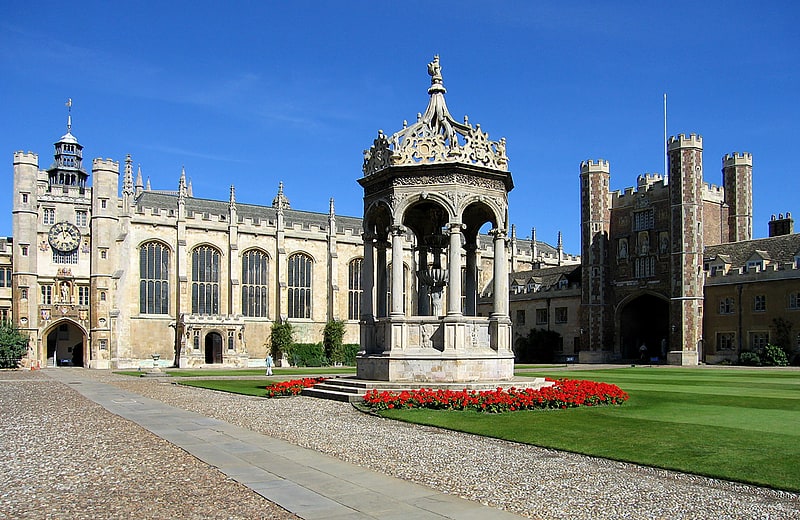
Building complex in Cambridge, England. Great Court is the main court of Trinity College, Cambridge, and reputed to be the largest enclosed courtyard in Europe.
The court was completed by Thomas Nevile, master of the college, in the early years of the 17th century, when he rearranged the existing buildings to form a single court.[35]